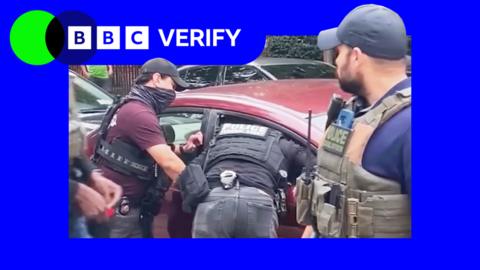Columbia Heights Residents Report Increased Raids
Residents in a Washington DC neighborhood with one of the city's largest Latino populations say they have seen a surge in immigration raids since the Trump administration launched its crime crackdown.
One resident, who wanted to remain anonymous, expressed, People are walking around scared; I've never seen the streets so empty. Videos shared on social media showcase arrests and protests in the Columbia Heights area.
Since the crackdown began on August 11, over 1,000 arrests have occurred in the capital, with nearly half being of suspected illegal immigrants, according to the White House. BBC Verify investigated this situation by reviewing various social media videos and interviewing locals.
Witness Accounts of Police Activity
Among the videos, one captures officers as they arrest two men in a red car, drawing a crowd of onlookers, some chanting, ICE go home. Eyewitness accounts describe a troubling atmosphere, where community members, including those with legal status, live in fear of detainment.
Videos also illustrate federal agents raiding homes and patrolling local parks where residents usually gather, resulting in a drastic decrease in public participation. One local remarked that the vibrant community atmosphere had transformed into one resembling a police state since the crackdown began.
In meetings with local individuals, including those who were arrested, concerns about the aggressive tactics of law enforcement and the psychological toll on the community were highlighted. The heightened activity has left many worried about being targeted, despite lawful status.
The Broader Impact
Despite being a neighborhood previously characterized by safety and vibrancy, the visible presence of federal law enforcement has changed perceptions drastically. The community's sense of security has eroded, as residents fear both the enforcement of immigration laws and the repercussions of being close to such operations.
As the crackdown continues, discussions surrounding its implications for public safety and immigrant rights remain vital in the ongoing dialogue regarding law enforcement practices in America.





















